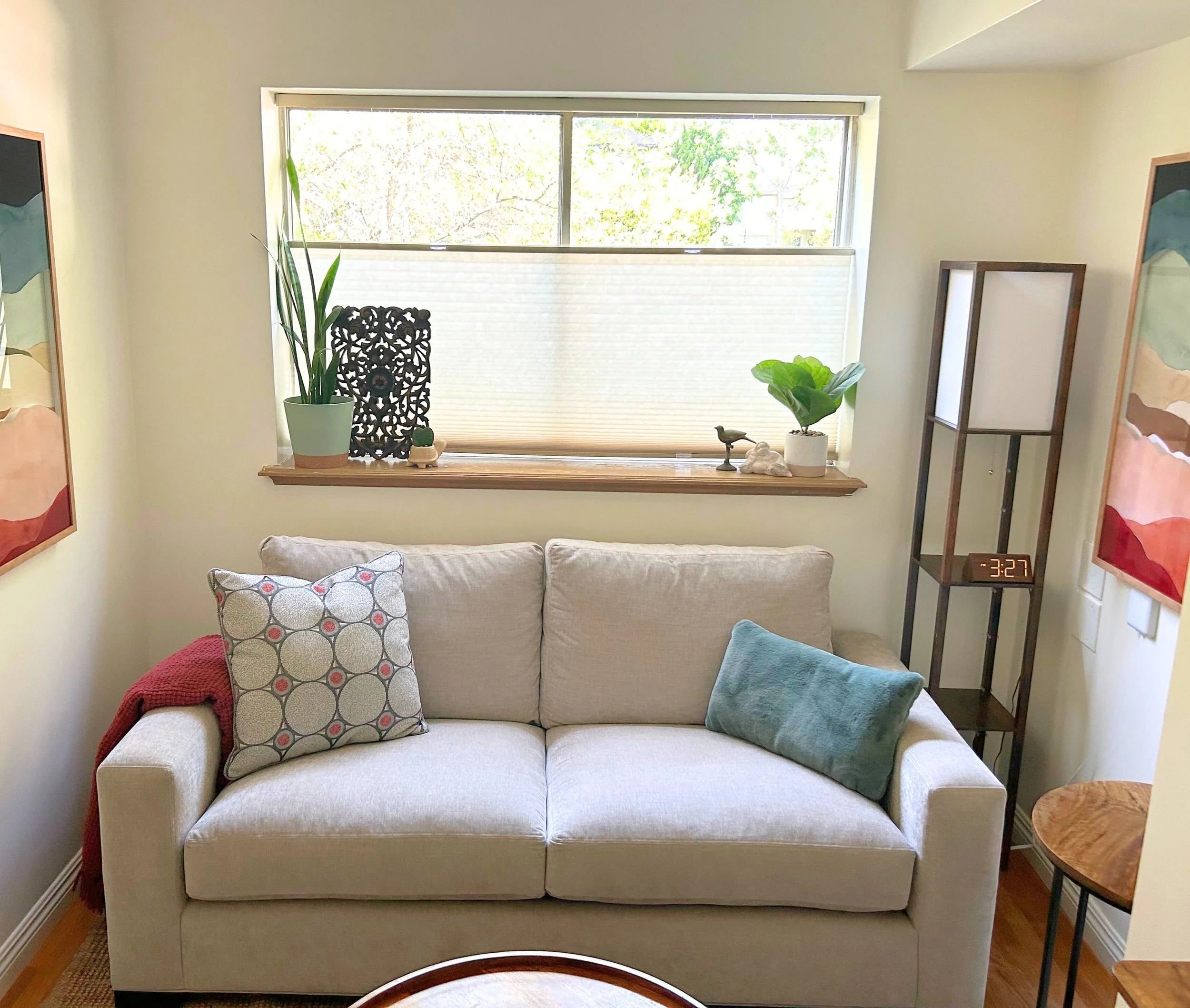
Approach
My Approach: What You Can Expect During Your Sessions
The foundation of our work together
will draw from the following therapeutic modalities.
Psychodynamic: Focuses on how your past experiences and unconscious patterns shape the way you feel and act today.
Relational: Centers on the healing power of relationships—especially the one with your therapist—to identify patterns and build trust, connection, and healthier ways of relating.
Humanistic: Emphasizes your strengths, values, and potential for growth, helping you connect with your most authentic self.
Narrative/Post-Modern: Encourages you to explore the stories you’ve been told or have told yourself, and then re-author them in ways that better reflect your values, strengths, and hopes.
Depending on your presenting concerns and treatment goals, I will integrate practices from:
-
Teaches you how the way you think affects the way you feel and act, and helps you change unhelpful patterns.
Sample exercise: Keeping a thought log where you write down a stressful situation, the automatic thought you had, and then practice finding a more balanced perspective. -
Focuses on building skills to manage intense emotions and cope with stress without harmful behaviors.
Sample exercise: Practicing grounding skills, like using the “5-4-3-2-1” technique (naming things you can see, hear, feel, smell, and taste) when emotions feel overwhelming. -
Focuses on helping couples understand the emotions underneath your conflicts so you can move from cycles of blame and withdrawal to cycles of closeness and security.
Sample exercise: Guiding one partner to share a vulnerable feeling directly to the other partner, while the other listens and responds with empathy, strengthening emotional safety.
-
Uses bilateral stimulation (like eye movements or tapping) to help your brain process and heal from painful memories.
Sample exercise: Bringing up a memory that feels stuck, and while you hold it in mind, do “butterfly taps” to help the memory feel less triggering. -
Helps couples build stronger relationships by growing your sense of partnership, improving how you handle disagreements, and building a life together that feels meaningful and connected.
Sample exercise: Each partner takes turns asking open-ended questions about the other’s inner world to deepen emotional knowledge and connection.
-
Helps you get to know different “parts” of yourself—like the inner critic or the protector—and build compassion for them.
Sample exercise: Checking in with your “anxious part” and asking what it needs, then listening without judgment as if you were talking to a younger version of yourself. -
Focuses on how your relationships and life transitions affect your mood, and helps you strengthen your communication and support systems.
Sample exercise: Role-playing a difficult conversation with a loved one to practice new ways of expressing your needs and setting boundaries.


